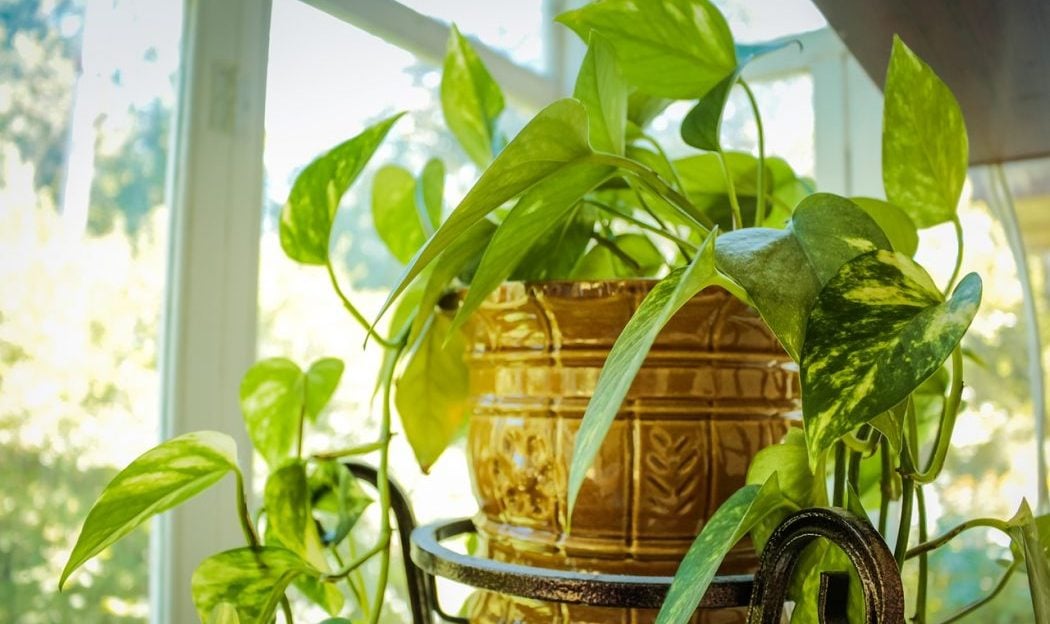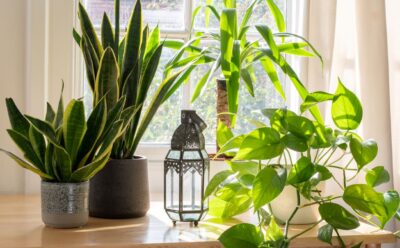 Fertilizing your indoor plants in the spring is an essential part of seasonal maintenance if you want healthy greenery in the coming months.
Fertilizing your indoor plants in the spring is an essential part of seasonal maintenance if you want healthy greenery in the coming months.
But fertilizing is just one part of your indoor plant routine at this time of year.
You also need to spend some time tidying up your plants, checking for pot-bound roots and eliminating the salt that can build up over several months.
Repotting & refreshing
Before you feed them, see if your plants need repotting. This is especially important in the spring, when they enter their growth period and the roots will be expanding. In some cases, you can get away with pruning the roots, adding fresh soil and returning the plant to its current pot (many plants prefer being a bit root-bound). If you do use a new pot, make sure it’s no more than an inch or two larger than the old one.
This is also a good time to clean up your plants by removing dead or dying leaves, pruning leggy stems and cleaning the leaves with a damp cloth or paper towel. Cleaning the leaves — both sides, please — helps a plant to photosynthesize and breathe.
Excess salt
The soil of houseplants is susceptible to salt build-up, which comes from minerals dissolved in water, especially softened water. The salt can damage the roots, resulting in a weakened plant that’s susceptible to disease and insects. Wilting, brown leaf tips and the loss of lower leaves are typical symptoms of salt build-up; you may also notice a ring of salt around the soil line.
More: Watering indoor plants
To prevent mineral build-up, leach the soil every four to six months. Start by removing any salt crust on the soil or the inside of the pot. Then pour a lot of water — about twice the volume of the pot — through the soil. Let it drain completely. Do this before fertilizing to avoid washing away all the new fertilizer.
Feeding
When you’ve done everything else, it’s time to feed your plants. Fertilizing indoor plants in the spring and summer is especially important because the plants are growing actively. You should reduce feedings in the winter.
The simplest way to feed houseplants is with a commercially available organic or synthetic fertilizer. Look for one that’s labelled for houseplants. It will have three numbers on the label, usually 10-10-10. Those numbers refer to the percentage of essential nutrients in the fertilizer: nitrogen (for healthy foliage), phosphorous (for strong roots) and potassium (for vibrant blooms).
Fertilizers come in liquid, powder or tablet form. A slow-release fertilizer can be mixed into the potting soil when you plant or replant, or sprinkled on the surface of the soil.
Some fertilizers are specially formulated for particular plants like azaleas, which need low-PH soil. Check the label for the types of plants you should use the fertilizer on.
Follow directions carefully and do not exceed the recommended amount of fertilizer. Too much can burn the roots or even kill the plant. That’s especially the case with chemical fertilizers, which tend to be more caustic than organic varieties like fish emulsion and kelp formulations.
The jury is out on exactly how often you should fertilize your indoor plants, but once a month seems to be the consensus. A slow-release fertilizer may last for months. In all cases, check the label.
Tip: Before applying fertilizer, moisten the soil well. This will help distribute the fertilizer properly rather than having it just run through dry soil and out the bottom of the pot.
Here’s how to choose the right fertilizer for your indoor plants:
Sources: Better Homes & Gardens, University of Illinois, others.
Originally published April 10, 2019.



